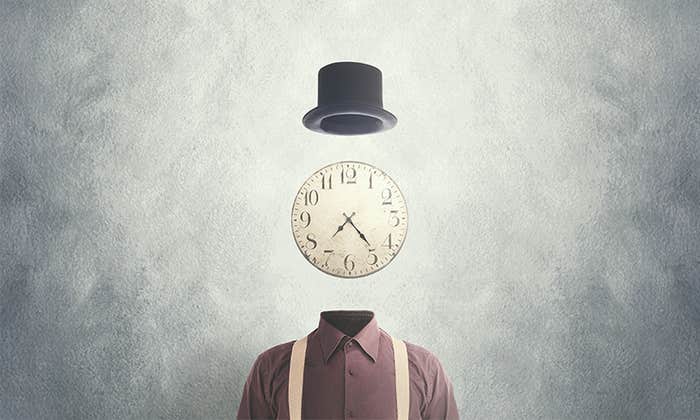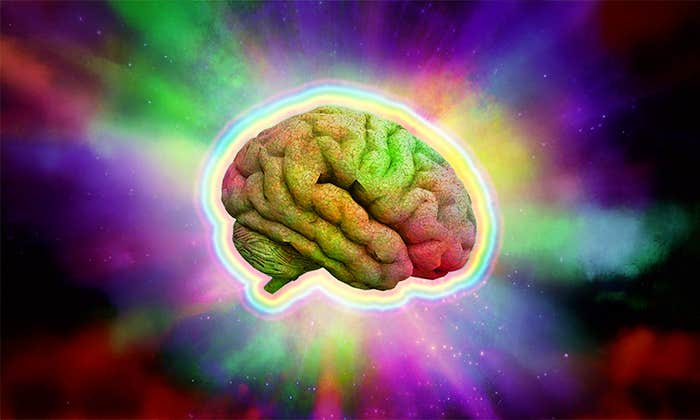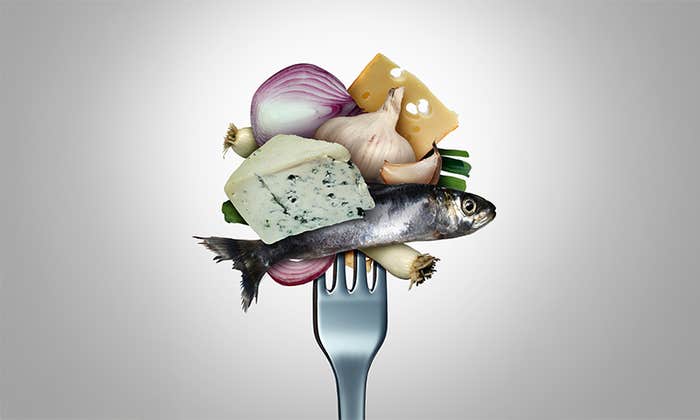As soon as the door slams, I slide to the floor in a cross-legged position and hold my breath. The room in which I have just barricaded myself looks a bit like Matilda’s chokey; a single light bulb casts a sickly yellow glow about the room, its walls lined with triangle-shaped chunks of fiberglass straining against wire mesh. In 15 minutes I will leave this room for the cacophonous world of Manhattan. I should, theoretically, be appreciating this small respite for what it is. Even so, with every second, I feel as if I’m going deeper underwater.
I am sitting in an anechoic chamber, the only one in New York City. Nestled in the hip, angled building of The Cooper Union for the Advancement of Science and Art, the anechoic chamber is where acoustics students, headed by the aptly-named Melody Baglione, conduct research—it’s the equivalent of a zero-gravity chamber, only in this case, the variable is sound. The room is designed to be as noise-free as possible; its chunky walls completely absorb reflections of sound waves, and insulate the space within from all exterior sources of noise. While the chamber is not exactly silent, per se—at 20 decibels, the ambient noise level is quieter than a whisper, but twice as loud as a pin drop— it’s almost certainly the quietest space in New York.
And the silence, as they say, is deafening. Sitting in here, it’s as if someone has turned the volume up inside of my head. I helplessly observe my mind as thoughts careen across it, stop in the middle and, after a brief, flailing, Wile E. Coyote-esque interval, plummet into the abyss. Desperate for distraction, I check my phone, crack my knuckles, make tiny coughing sounds. Each tiny rupture of quiet attains such specialness, such texture, you can practically touch it. It takes tremendous effort to be silent: yet that’s what I’m here to be. In a futile, self-defeating moment, I try to force myself to un-tense. “Just relax!” I scold myself. I am in what you might call a state of withdrawal: and, like it must be when withdrawing from anything at first, sobriety is deeply uncomfortable.
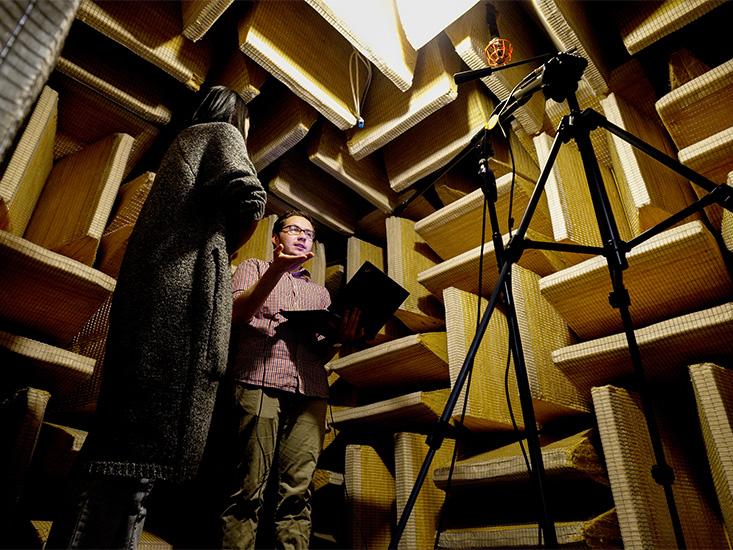
What am I detoxing from? Noise. I live in the East Village, which is very noisy—illegally noisy. Last year, Jackie Le and Matthew Palmer, acoustics engineering students at Cooper Union, decided to investigate the noise levels of the area near their school for their senior project. Le and Palmer went to various apartments around this neighborhood and, using a decibel meter, calculated the average level of volume coming in through the open windows of multiple apartments, and compared them with “safe” levels defined by New York City’s recently-revised noise code. “In every instance, we found the noise coming into these people’s apartments was above code,” Le says.
If noise is a drug, then it’s a performance drug.
I can vouch for this. I’ve spent this whole year telling anyone who will listen that the hundreds of nights I’ve spent trying to fall asleep in my apartment constitute a Sisyphean Hell of endurance: the iterating, irritating garbage trucks, the construction that starts at promptly 6 a.m. and continues into evening. I make a lot of noise about the noise, and I’m not the only one. Noise is the single greatest quality-of-life complaint New Yorkers have (we lodged 18,000 phone complaints with the Department of Environmental Protection last July alone). We all love to hate the noise. And yet sitting in silence, I do not feel as if I’ve found an escape from pain: I have simply traded it for a new variety. Shockingly, I realize I want to trade back.
In this city of complainers, who could admit to loving something so easy to complain about? Lewis Black, a comedian, couches his praise of noise in a cynical one-liner, noting dryly, “The reason I live in New York City is because it’s the loudest city on the planet Earth. It’s so loud I never have to listen to any of the shit that’s going on in my own head.”
Black might be on to something. Noise can cause us distress and pain, but it can also help us think, perceive, remember, and be more creative. It turns out that it’s even necessary for our physiological and mental functioning. If it’s a drug, then it’s a performance drug. And New York is full of addicts.
Though it’s counterintuitive, numerous experiments have demonstrated that the addition of noise can actually improve signal detection. This phenomenon, known as stochastic resonance, was first developed to describe the periodic nature of glacial climate change, and is thought to occur across many nonlinear dynamic systems—including the human brain.
A team led by Keiichi Kitajo, a researcher at RIKEN Brain Institute, first demonstrated this effect in vision. Noise coming into subjects’ left eyes increased their ability to detect a signal with their right. Since then, stochastic resonance has been observed at every level of the nervous system, from sensory receptors to neuronal networks. Researchers at the Wyss Institute at Harvard University have used vibrating insoles to add tactile noise to the soles of feet, improving tactile perception and balance. Auditory noise has been observed to enhance detection of an accompanying signal—which is known as “auditory stochastic resonance.”1
Auditory noise can heighten our other senses, too. Researchers have found that an “optimal amount” can make your fingers more sensitive to sensations, improve your ability to see contrast and even correct your posture (by enhancing “proprioceptive,” or positioning, signals).2 This is known as “cross-modal” stochastic resonance: Noise is a rising tide, lifting all signals. Cross-modal stochastic resonance can also improve memory, and higher-level cognitive processes such as judgment.3,4 It may even make us more ingenious.
It’s as if simply existing in this bustling landscape has helped me streamline and make sense of my own inner world.
In 2012, Ravi Mehta and a team of researchers at the University of British Columbia proposed that noise and the brain have a Goldilocksian relationship: Too much or too little impairs thought, but at moderate levels, when it’s “just right,” it makes us more creative. They subjected this hypothesis, as in the parable, to several tests.
First, the researchers created a noise smoothie from a blend of ambient sounds, including people talking in a cafeteria, vehicle traffic, and distant construction noise. Then they piped it into a room full of undergraduates at various volumes: low (50 db), moderate (70 db), and high (85 db). The students took a Remote Associates Test (or RAT) designed to measure creativity at each volume. The questions consisted of three or four stimulus word prompts, followed by a guess at what the target word is: For example, faced with “shelf,” “read,” and “end,” the correct response was “book.” The number of correct answers reflects the ability to think creatively and associatively.
Students working in the moderate noise level condition generated the most correct answers, an average of 1.5 more correct answers than in the low noise conditions, and 1.9 more than in the high noise condition. When participants were then asked to come up with creative ideas for a new mattress, low and medium noise participants both generated more ideas than high noise participants, but moderate noise participants’ ideas were rated as “more creative” than both low and high noise by a team of independent judges. The researchers made sure to control for the moderate increase of cortisol that can sometimes lead to increased productivity in the presence of noise.
What was going on, the researchers believed, was that the moderate level of noise induced processing disfluency, defined as the loss of “the subjective experience of ease or speed in processing information.” Processing disfluency is basically a measure of mental distance: When it exists, fixating, or thinking closely, becomes just difficult enough that the mind doesn’t clench around the particularities of an idea. Instead, it has a looser attitude, and can shift perspectives. The right amount of processing disfluency spurs creative thinking—thoughts with a perfect “creative” distance from their subject. Too much processing disfluency, however, and coherence is lost. This isn’t textbook stochastic resonance, because creativity can’t be boiled down to signal detection. But, just like textbook cases, an optimum exists, after which benefits fall away parabolically.
The optimal level for creative thinking, Mehta found, is 70 db—about the level of a crowded café.5 Or traffic in midtown Manhattan.
Dannielle Tegeder is a contemporary artist best known for her abstract blueprints of Utopian cities, and has had her work presented in over 100 gallery exhibitions. She has several pieces in the permanent collections of New York’s Museum of Modern Art, Chicago’s Museum of Contemporary Art, and The Weatherspoon Museum of Art in Greensboro. Her studio? It’s in the heart of Times Square.
“I don’t think you could get a louder and crazier place in all of New York City,” she says. However, when she attempts to just “get away from it all” she finds herself unable to work. “I go to a lot of artist residencies upstate, and I become completely immobilized when I’m there,” she says. “I find that it really brings my creativity level down, being in a bucolic environment. It’s just too calm.”
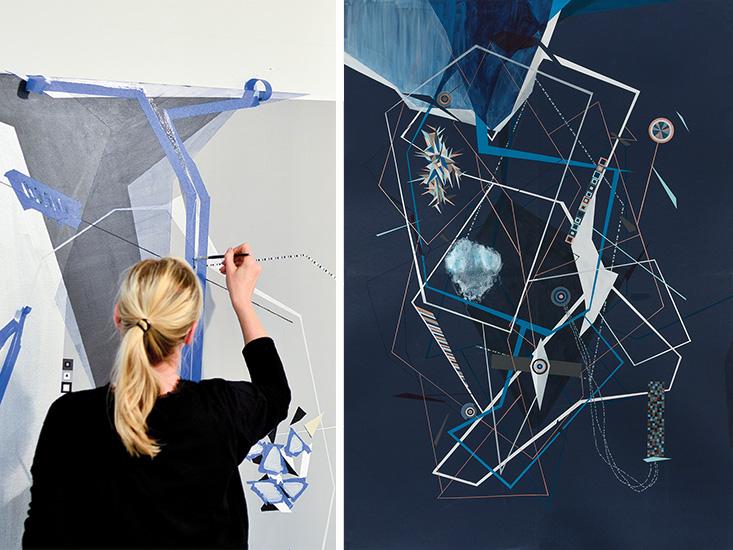
The focus of Tegeder’s work is city living, and “how pathways are made through pedestrians and traffic and subways.” New York’s noise is “exciting and stimulating,” she says, and it gives her something. “Weirdly, being in such a loud productive space in the middle of the city connects into my thinking and being. There’s a certain agitation level I get, because I commute during rush hour, but there’s still something I get from that. I don’t want to say it wakes you up, but it pushes you to think in a different way for sure.”
William Parker, a composer and double bassist living in the East Village and a prominent member of the New York City avant-garde jazz scene, believes the city’s noises are an integral part of his music. Growing up in the Bronx, he says, “I really started getting into listening to, not what I was focused on, but to peripheral sounds.” His relationship with noise deepened as his career took off. “Later on, as I started studying music, [peripheral noise] became very important to me.” (See Rooted in Sound.)
For Tegeder, Parker, and many of the city’s residents, the noise of New York is a comfort, an inspiration, even a declaration of identity. The city’s own noise code tips its hat to this fact, saying on its first page that it aims to balance health needs with New York’s “important reputation … as a vibrant, world-class city that never sleeps.” The city’s noise pulls on the psyche, a jangling byproduct and energetic hum that feeds on itself.
As the city gets louder, it is also getting more creative. The Center for an Urban Future 2013 report “Creative New York” found that, “while traditional economic drivers like finance and legal services have stagnated in recent years, several creative industries have been among the fastest growing segments of the city’s economy.” Employment in film and television production increased 53 percent over the past decade. Architecture (33 percent growth), performing arts (26 percent), advertising (24 percent), visual arts (24 percent), and applied design (17 percent) all outpaced the city’s overall employment growth, which was 12 percent. Today the city is home to 14,145 creative businesses and nonprofits, up 18 percent from a decade ago; there are more Etsy sellers than yellow cab drivers.
All of which doesn’t mean that every creative type will benefit from the Big Apple’s din. The “just-right” level of noise will differ from one person to the next, following their levels of internal noise: the symphony (or cacophony) created by the interaction of organs, electrophysiological signals between skeletal muscles, and conversations between our neurons.6 We know that internal and external noises combine and compete in our bodies and minds, and this balance can tilt one way or the other. How can you tell if you’ll like it? It helps if you have ADHD.
If you’re a New Yorker who finds herself in the suburbs, white noise could be your nicotine patch.
People with ADHD often have low neural dopamine levels. This leads them to have memory and focus issues, and to seek excess external stimulus. Noise can have minor medicative effects for them; Göran Söderland and a team of researchers found that subjects with ADHD performed better on cognitive tasks under 81 db level of ambient noise (about the loudness of a garbage disposal), while control groups’ performance declined.7 “Participants with low dopamine levels (ADHD) require more noise for optimal cognitive performance compared to controls,” they write.
Again, there was a Goldilocks effect. “Strong, salient, irrelevant stimuli may easily disrupt concentration, leading to attentional problems, whereas an impoverished environment may be compensated for by hyperactivity. However, moderate levels of arousing stimuli may be beneficial for cognitive performance.” Söderland and his team believed this boils down to the behavior of dopamine, the neurochemical intimately tied into the mechanism of ADHD. By enhancing the difference between internal noise and external stimulation, it helps us separate meaningful external cues from meaningless internal neurological and chemical rumblings. In other words, our signal-to-noise ratio goes up.
In people with ADHD, dopamine is usually too low—until environmental stimuli come in. Then, dopamine goes haywire, flooding the synaptic cleft and drowning out the signal, then getting drawn back into the system, creating yet more noise and confusion. A moderate level of constant noise acts like the classic stochastic resonant system: A signal gets enhanced and stays there. Dopamine rises on the tide of noise, but gently, without flooding. ADHD medication changes this balance, and patients often report increased sensitivity to external noise.
New York may just be the perfect ADHD pill, dialing up the noise in the heads of individuals with low internal noise, and helping them dial down the chaos they feel. Highly creative people often suffer from ADHD, and I’ve been diagnosed with it. Ever since moving to New York, I’ve experienced an unprecedented balance of productivity and peace—it’s as if simply existing in this bustling landscape has helped me streamline and make sense of my own inner world.
Here’s the thing about noise, though— you miss it when it’s gone.
To live in New York means to get habituated to the noise of everyday life here. Researchers have seen the effect happen over time. As a neighborhood becomes more homogenous, and its residents sync their noise patterns, noise complaints tend to go down. This may explain why, controlling for other factors, gentrifying areas of the city display higher levels of noise complaints. City residents stop consciously recognizing noise as novel, and it becomes background, even if their bodies don’t always recognize it as such.
Arline Bronzaft, an environmental psychologist with a specialty in the effects of noise pollution, cautions that noise tolerance can be harmful. “People use the phrase, ‘I get used to it—I walk the streets and I get used to the noise,’ ” she told The New York Times in 2013. “It means you’ve adapted to the noise. When you’re dealing with something, you’re using energy to cope with the situation. Guess what? That’s wear and tear on your body. So when you hear someone say, ‘I’m dealing with it,’ I say, ‘Yes, but at what cost?’ ” All those jackhammers, sirens, and late-night garbage trucks are working their way into your teeth, your ears, your brain, and your heart. Studies conducted in industrial settings have long demonstrated relationships between noise exposure and cardiovascular disorders. In 2006, Dr. Hildegaard Niemann found that people exposed to neighborhood noise lived shorter lives, thanks to increased risk for heart disease, depression, migraines, and respiratory system problems.8
That’s not to mention hearing loss, which occurs after prolonged exposure to all sounds louder than 85 db, says Charles Shamoon, an assistant counsel at the DEP who co-authored the city’s revised noise code in 2007. These effects are further compounded by stress.
Sometimes, though, nothing is as loud as quiet. When he moved home after graduation, Matthew Palmer, the Cooper Union student whose project ratted out the entire East Village, found that he missed the noise that used to jar him, and had trouble sleeping. “Every time I come to visit my family, it feels way too quiet.” The experience is a common one for people who move to the suburbs from the city. They find it difficult to sleep; their brains, in the absence of the moderate external noise they’re used to, ramp up their internal noise, and become increasingly sensitive to the smallest sounds.
After the city, a quiet environment can produce “sensory underload,” a lowered level of stimulation that brings with it a higher level of noisy neural activity. In a miniature everyday version of this effect, people trying to get to sleep at night often report internal overstimulation, or “racing thoughts”—in lieu of external stimuli, it’s as if the noise in their head is dialed up, and thoughts all crowd in at once. Physicians often prescribe white noise—a moderate, constant external noise source—to help calm racing thoughts. If you’re a New Yorker who finds herself in the suburbs, white noise could be your nicotine patch. Or, if you’re back in the city, just crack open a window.
In the essay collection Goodbye to All That, a group of ex-New Yorkers reflect on what initially drew them to the city—“the crush of subway crowds, the streets filled with manic energy, and the certainty that this is the only place on Earth where one can become exactly who she is meant to be”—and the subsequent need to leave.9 Once they do leave, each of them finds a residual ache, a withdrawal effect. Nowhere is this nostalgia more palpable than in Joan Didion’s description of her walk home from work, which she presents to us as a baffling bouquet of sensory noise: “I could taste the peach and feel the soft air blowing from a subway grating on my legs and I could smell lilac and garbage and expensive perfume and I knew that it would cost something sooner or later …”
As for myself, I found the brief respite from the city in the anechoic chamber invigorating. As I leave the chamber, I feel my vision sharpen. Every part of my body feels more alert, but still relaxed. I tell Baglione that I feel like I’ve just been in a spa. “I could do this every day,” I say. She looks at me like I’m crazy. Going cold turkey was hard for a bit. But then the fuzz inside of my brain smoothed out. After about 5 minutes, I relaxed. I realized I could hear my blood circulating throughout my body. My thoughts slowed, reaching solid conclusions.
Outside Cooper Union, the city noise assaults me once more; there’s a drill placed uncannily close to the school’s entrance, and a man is jackhammering away. I reach into my backpack pocket and pull out Baglione’s parting gift: a pair of earplugs. I spend the rest of the day walking around with them stuffed inside my ears. I only take them out once—when I see a man playing a painted piano in Washington Square Park, his fingers pounding the keys.
Susie Neilson is an Editorial Fellow at Nautilus.
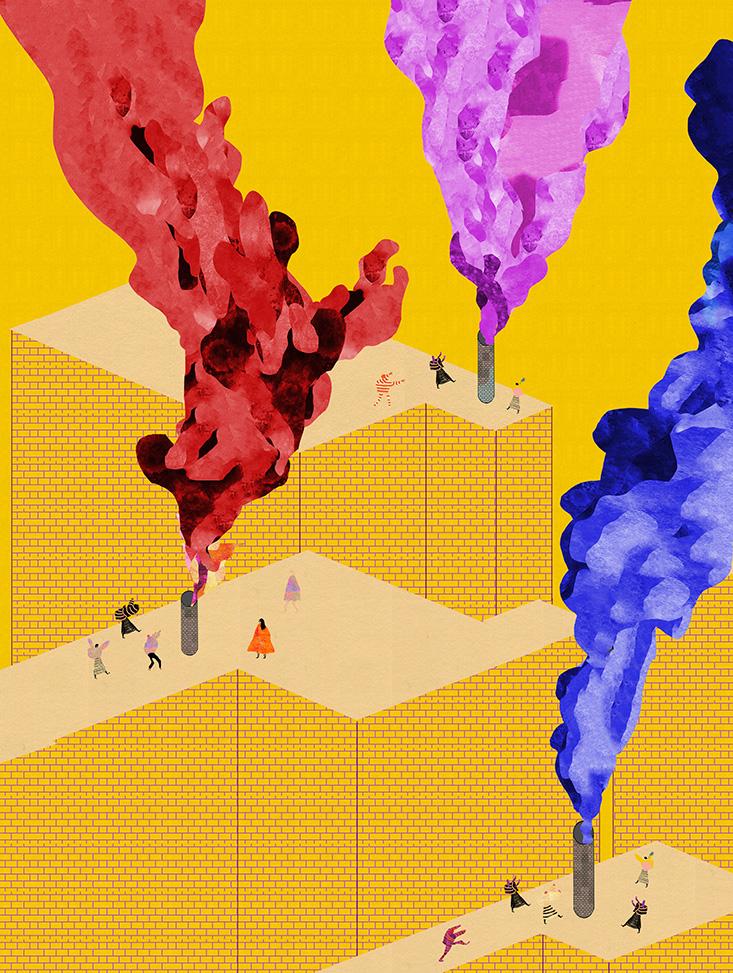
References
1. Ward, L.M., MacLean, S.E., & Kirschner, A. Stochastic resonance modulates neural synchronization within and between cortical sources. PLoS One 5, e14371 (2010).
2. Lugo, E., Doti, R., & Faubert, J. Ubiquitous crossmodal stochastic resonance in humans: Auditory noise facilitates tactile, visual, and proprioceptive sensations. PLoS One 3, e2860 (2008).
3. Herweg, N.A. & Bunzeck, N. Differential effects of white noise in cognitive and perceptual tasks. Frontiers in Psychology 6, 1639 (2015).
4. Usher, M. & Feingold, M. Stochastic resonance in the speed of memory retrieval. Biological Cybernetics 83, L11-L16 (2000).
5. Mehta, R., Zhu, R., & Cheema, A. Is noise always bad? Exploring the effects of ambient noise on creative cognition. Journal of Consumer Research 39, 784-799 (2012).
6. Faisal, A.A., Selen, L.P.J., & Wolpert, D.M. Noise in the nervous system. Nature Reviews Neuroscience 9, 292-303 (2008).
7. Söderlund, G., Sikström, S., & Smart, A. Listen to the noise: Noise is beneficial for cognitive performance in ADHD. Journal of Child Psychology and Psychiatry 48, 840- 847 (2007).
8. Baughman, B. Noise pollution hard on heart as well as ears. NPR (2011).
9. Botton, S. (Ed.) Goodbye to All That Hachette Book Group, New York, NY (2013).


















